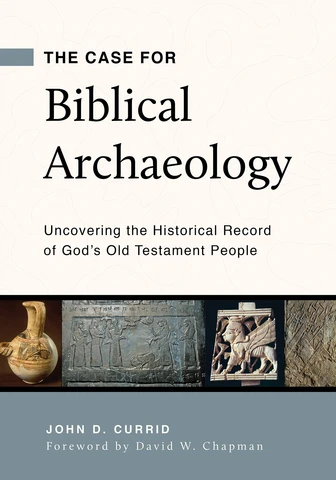
John D. Currid
Reviewed by: James S. Gidley
The Case for Biblical Archaeology: Uncovering the Historical Record of God’s Old Testament People, by John D. Currid. P&R, 2020. Paperback, 288 pages, $22.50. Reviewed by OP elder James S. Gidley.
An introduction to biblical archaeology may seem to hold little interest to a generation that values personal authenticity and tends to discount even the possibility of historical accuracy. But the Bible is the revelation of God’s mighty acts in history, and if we wish to retain the essence of redemptive religion, we cannot afford to be indifferent to the physical relics of that history that form the subject matter of archaeology.
Dr. Currid provides a compact, readable introduction to biblical archaeology. As indicated in the subtitle, he focuses on archaeological findings that are relevant to Old Testament study. The book is well adapted to serve as a textbook for an introductory college course. Ordained officers, church members, students in Christian high schools, and home schoolers will also profit from using it as a reference work in Bible study. Each chapter ends with a short list of key terms and a few discussion questions. Currid writes clearly and defines technical terms, with the result that I was able, as a novice, to grasp the material readily.
The book is organized into three main parts of roughly equal length. The first part, “Setting,” provides a general orientation to geography, history, and method. Currid gives a brief history of archaeological investigations in Palestine, explaining major changes in method that have strongly influenced the value of the findings. He also gives a brief history of the lands of the Bible.
The second part of the book, “A Journey Through the Land,” describes the principal archaeological findings in seven geographical regions of Palestine. (I am using the word Palestine, as does Currid, without intending any political implications.) Currid describes the major archaeological sites in each region and the most important findings at them. He typically covers a site in about one page. Often the findings include settlements that predate the time of Abraham, sometimes by thousands of years. One takeaway from this part of the book is that the period of the judges and kings of Israel only encompassed a fraction of an overall history spanning several thousand years.
The third part, “Aspects of Society,” organizes the material thematically, containing chapters entitled: “Agriculture and Herding,” “Water,” “Architecture,” “Ceramics,” “The Hebrew Language in Archaeology,” “Burial Practices,” and “Small Finds.”
The book is rounded out by three appendixes, a glossary, a bibliography, and two indexes.
The title of the book, “The Case for Biblical Archaeology” led me to expect a philosophical or theological argument about why the study of biblical archaeology is important or necessary. Currid gives a little of that in the introduction, but for the most part, his “case” for biblical archaeology is the subject matter itself.
November 09, 2025
November 02, 2025
October 26, 2025
October 19, 2025
October 05, 2025
Raising Sexually Faithful Kids and
Parenting Boys and Girls in a Gender-Confused World
September 28, 2025
Calvin’s Ecclesiology: A Study in the History of Doctrine
September 21, 2025
© 2025 The Orthodox Presbyterian Church